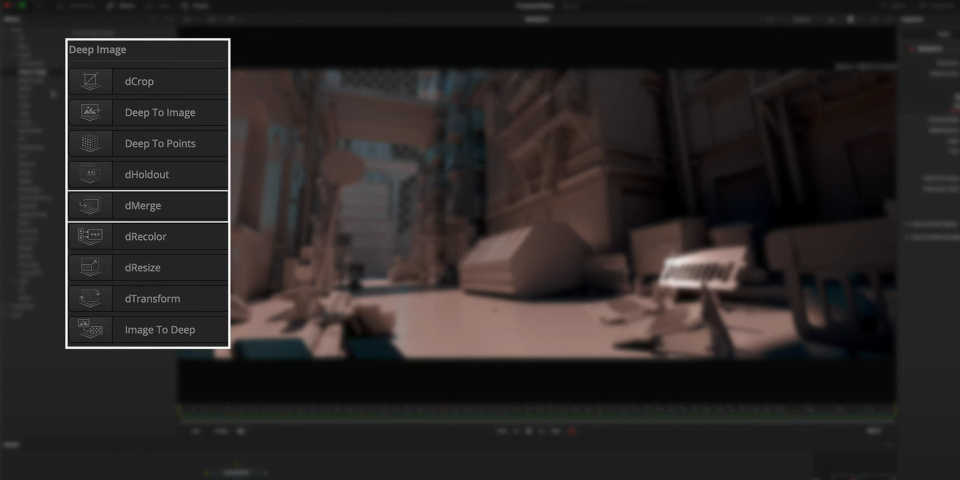Blackmagic Design releases Fusion Studio 20.0 in beta
html PUBLIC "-//W3C//DTD HTML 4.0 Transitional//EN" "http://www.w3.org/TR/REC-html40/loose.dtd"Blackmagic Designs NAB 2025 livestream announcing its latest product updates. The new features in Fusion are shown at 2:26:15, shown here in the Fusion page inside DaVinci Resolve.Blackmagic Design has released the first public beta of Fusion Studio 20.0, the latest version of its 3D compositing software.Its a sizeable update, adding a complete new deep compositing toolset, and support for multi-layer EXR workflows, 180 VR formats, and Cryptomatte matte ID data.Also available inside DaVinci Resolve 20A version of the Fusion toolset is included in DaVinci Resolve, Blackmagic Designs colour grading, editing and visual effects software, version 20 of which has also just been released.DaVinci Resolve gets more promotional support than Fusion Studio at the time of writing, the Fusion Studio 20 product webpage still lists features from version 17 so the video above shows the Fusion page within DaVinci Resolve 20.0, but the new features should be the same.Fusion Studio 20.0: complete new deep compositing toolsetThe main change in Fusion Studio 20.0 is support for deep compositing.Deep compositing, long supported in VFX-focused apps like Nuke, makes use of depth data encoded in image formats like OpenEXR to control object visibility.It simplifies the process of generating and managing holdouts, and generates fewer visual artifacts, particularly when working with motion blur or environment fog.Fusion Studios implementation makes it possible to import deep images and inspect them in a viewer or by converting them to point clouds within the 3D environment.For manipulating deep image data, a new set of nodes, shown in the screenshot above, make it possible to merge, transform, resize, crop, recolor and generate holdouts.It is also possible to convert between deep and standard images, and to convert deep images to points.For exporting data, it is now possible to render deep images from the 3D environment.Support for multi-layer workflows and Cryptomatte dataThe update also introduces full support for multi-layer workflows, with all of Fusions nodes now supporting multi-layer images such as PSDs or layered EXRs.Users can preview image layers in the viewer, and access and manipulate layers independently inside any node, removing the need to generate multiple separate renders of a source file.Fusion also now natively supports Cryptomatte ID matte data in EXR files.Supported as standard in other VFX tools, Cryptomatte data makes it possible to isolate individual objects or sub-objects in rendered images, and manipulate them independently.New optical-flow based vector warping toolsetOther new features include a vector warping toolset, for image patching and effects like digital makeup or mapping an image onto a deforming surface: for example, a logo onto clothing.The toolset is optical-flow-based, so it can also be used for more general tasks: other suggested uses include motion-vector-based noise reduction.Support for 180 VR workflows for virtual reality contentUsers creating virtual reality content get support for 180 VR workflows.Key tools, including PanoMap, the spherical stabilizer, LatLong patcher, 3D VR camera and the 3D viewers have been updated to support 180 as well as 360 angles of view. It is also now possible to render 3D scenes to VR 180.Other changes: new 3D dome light, updated text tools and performance improvementsOther changes include a new 3D scene Dome Light, making it possible to use 360 HDRI images as background environments and to light scenes more realistically.The text tools have been extended, with the release adding a new MultiText tool and updating the Text+ tool to make it possible to control the layout of on-screen text more precisely.Workflow improvements include the option to set a start frame for compositions, and to search for tools based on effects category.Performance improvements include GPU support in the PanoMap and spherical stabilizer tools.For pipeline integration, the update moves Fusion Studio to ACES 2.0 and OpenColorIO 2.4.2, newer versions of the color-management standards.Pricing and system requirementsFusion Studio 20.0 is available in public beta for Windows 10+, Rocky Linux 8.6 and macOS 14.0+. Blackmagic Design hasnt announced a final release date yet.Blackmagic Design has just raised the prices of its products in the US to take account of the new US import tariffs, so new perpetual licenses now cost $399 in the US, up from $295.In other countries, the price is currently unchanged.The Fusion toolset in the free edition of DaVinci Resolve has a maximum image resolution of 16k x 16k and lacks network rendering capabilities. See a feature comparison table.Read a full list of new features in Fusion Studio 20.0 in the online release notesHave your say on this story by following CG Channel on Facebook, Instagram and X (formerly Twitter). As well as being able to comment on stories, followers of our social media accounts can see videos we dont post on the site itself, including making-ofs for the latest VFX movies, animations, games cinematics and motion graphics projects.


